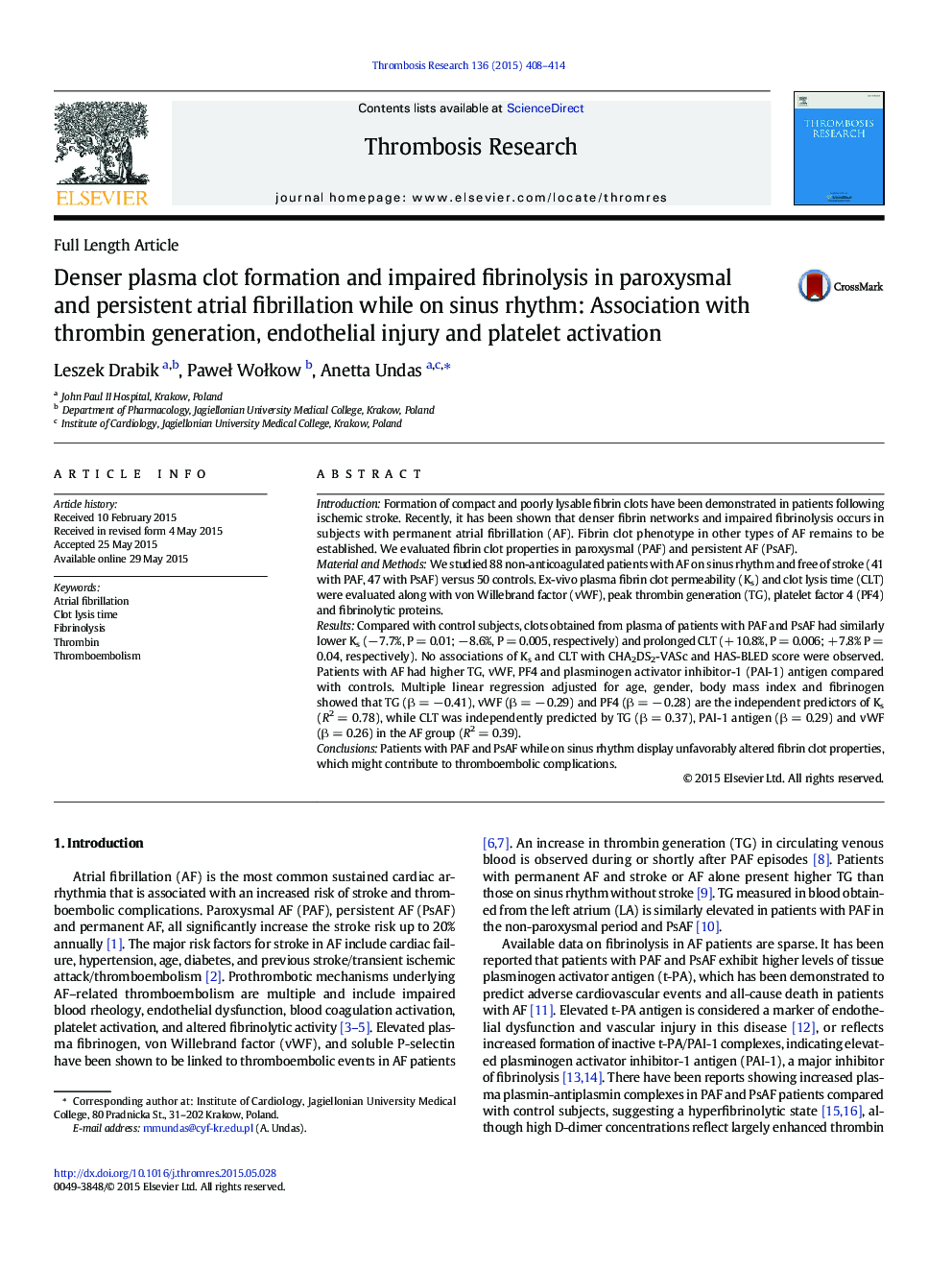| کد مقاله | کد نشریه | سال انتشار | مقاله انگلیسی | نسخه تمام متن |
|---|---|---|---|---|
| 6001329 | 1182948 | 2015 | 7 صفحه PDF | دانلود رایگان |
- Formation of compact fibrin clots characterizes patients with atrial fibrillation (AF).
- Both paroxysmal and persistent AF are associated with impaired fibrinolysis.
- Endothelial injury, platelet activation, thrombin generation modulate fibrin in AF.
- No associations of Ks and CLT with CHA2DS2-VASc and HAS-BLED score were observed.
IntroductionFormation of compact and poorly lysable fibrin clots have been demonstrated in patients following ischemic stroke. Recently, it has been shown that denser fibrin networks and impaired fibrinolysis occurs in subjects with permanent atrial fibrillation (AF). Fibrin clot phenotype in other types of AF remains to be established. We evaluated fibrin clot properties in paroxysmal (PAF) and persistent AF (PsAF).Material and MethodsWe studied 88 non-anticoagulated patients with AF on sinus rhythm and free of stroke (41 with PAF, 47 with PsAF) versus 50 controls. Ex-vivo plasma fibrin clot permeability (Ks) and clot lysis time (CLT) were evaluated along with von Willebrand factor (vWF), peak thrombin generation (TG), platelet factor 4 (PF4) and fibrinolytic proteins.ResultsCompared with control subjects, clots obtained from plasma of patients with PAF and PsAF had similarly lower Ks (â 7.7%, P = 0.01; â 8.6%, P = 0.005, respectively) and prolonged CLT (+ 10.8%, P = 0.006; + 7.8% P = 0.04, respectively). No associations of Ks and CLT with CHA2DS2-VASc and HAS-BLED score were observed. Patients with AF had higher TG, vWF, PF4 and plasminogen activator inhibitor-1 (PAI-1) antigen compared with controls. Multiple linear regression adjusted for age, gender, body mass index and fibrinogen showed that TG (β = â 0.41), vWF (β = â 0.29) and PF4 (β = â 0.28) are the independent predictors of Ks (R2 = 0.78), while CLT was independently predicted by TG (β = 0.37), PAI-1 antigen (β = 0.29) and vWF (β = 0.26) in the AF group (R2 = 0.39).ConclusionsPatients with PAF and PsAF while on sinus rhythm display unfavorably altered fibrin clot properties, which might contribute to thromboembolic complications.
Journal: Thrombosis Research - Volume 136, Issue 2, August 2015, Pages 408-414
